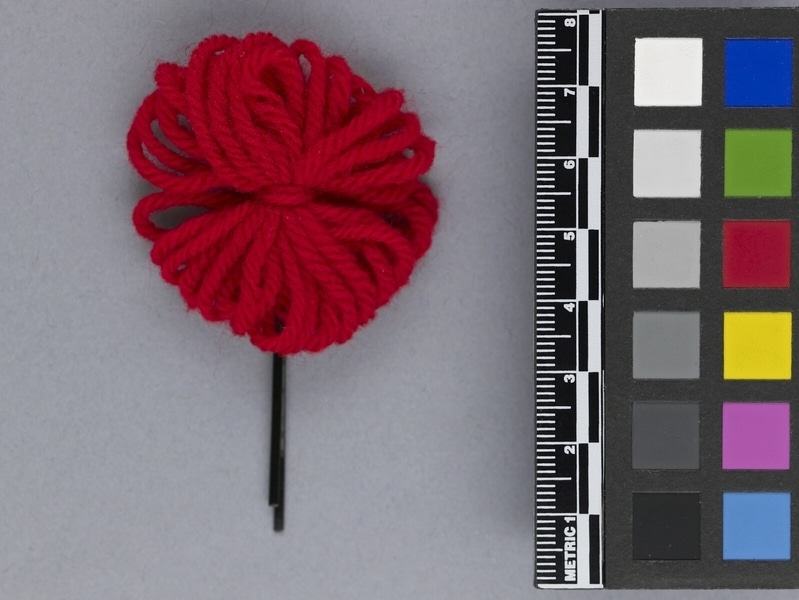Funerary Hair Pin Item Number: 682/5 from the MOA: University of British Columbia


Description
Flower shaped hair ornaments consisting of strands of red wool grouped together in loops and tied in the centre to the top of a black coated metal, folded hair pin.
History Of Use
At the time of collection (1980) such funerary hair pins were frequently seen both in Vancouver and in Hong Kong being worn by women who were in mourning for a relative, or who had just completed the mourning period. They are now (2013) no longer in use. The colour of the yarn reflected the relationship of the wearer to the deceased. In this they reflected the mourning garments and headdresses worn at funerals, which generally ranged from sackcloth for sons through white cloth to blue or garments with patches of red or blue for other relatives. In the past, the period of mourning lasted for as long as three years, but in Hong Kong in the 1960s-70 it had been reduced to five to seven weeks for a very senior family member and for families who could afford the expense of the relevant rituals. It has now been reduced to as little as one to three days, because of the demands of people’s employment, although women might have worn these hair pins longer, as they did not interfere with daily life. When the mourning period was over and the relevant rituals completed, relatives often changed quickly to red accessories. According to Mrs. Yau Chan, Shek-ying, for Hakka people in Tsuen Wan, Hong Kong, up until the period after World War II clothes worn in mourning for an elderly family member who had lived to be more than sixty years old might then be used to make clothing for children in the family, as they were considered to carry the power of longevity.
Iconographic Meaning
The fact that this hair pin is red indicates that the wearer’s mourning period for a relative is over. Red symbolizes happiness, and it is also considered to be auspicious and protective.
Narrative
This hair pin, made of red yarn, probably signified that the mourning period of the wearer was over.
Item History
- Made in Vancouver, British Columbia, Canada
- Collected during 1980
- Owned by Elizabeth L. Johnson before November 17, 1980
- Received from Elizabeth L. Johnson (Donor) on November 17, 1980
What
- Name
- Funerary Hair Pin
- Identification Number
- 682/5
- Type of Item
- pin
- Material
- wool fibre, paint, dye and metal
- Overall
- height 7.0 cm, width 4.5 cm, depth 1.0 cm
Who
- Culture
- Chinese
- Previous Owner
- Elizabeth L. Johnson
- Received from
- Elizabeth L. Johnson (Donor)
Where
- Holding Institution
- MOA: University of British Columbia
- Made in
- Vancouver, British Columbia, Canada
When
- Collection Date
- during 1980
- Ownership Date
- before November 17, 1980
- Acquisition Date
- on November 17, 1980
Other
- Item Classes
- textiles
- Condition
- good
- Accession Number
- 0682/0005